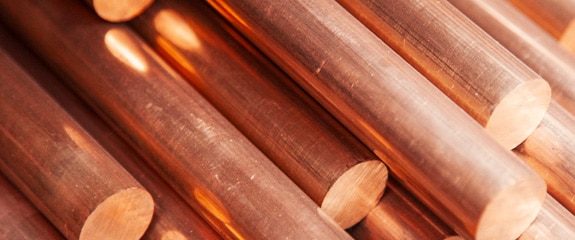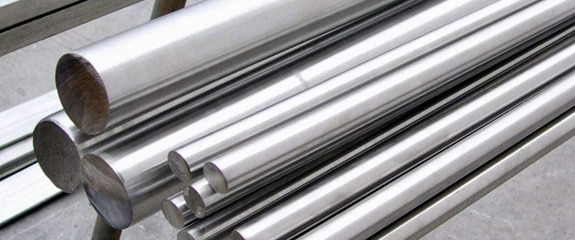Brass vs Stainless Steel Wire Mesh: What Wire Mesh Alloy Makes Sense?
Stainless steel is by far one of the most widely used alloys in the wire mesh industry. It offers a balance between performance and affordability that most filtration and screening operations find favorable.
But sometimes stainless steel isn't necessarily the answer. It's for this reason that you must know how stainless steel compares to other popular alloys, such as brass.
W.S. Tyler has been in the wire mesh business for over 140 years and strives to help customers like you design wire mesh solutions that bring value.
For that reason, we wrote the following article to establish how brass and stainless steel compare so you can get a better idea of which alloy fits your needs best.
What you will learn:
- How brass is defined in the wire mesh industry
- The benefits of using brass wire mesh
- How stainless steel is defined in the wire mesh industry
- What alloy makes sense for your specific needs
What Is Brass?

Classified as a copper alloy, brass is a wire mesh alloy known for its copper and zinc composition. As brass is classified based on its copper to zinc content ratio, it should be noted that W.S. Tyler uses a specialized brass constant of 85% copper and 15% zinc when weaving wire mesh.
This particular brass composition allows wire mesh to combat rusting.
Why Use Brass Wire Mesh?
When wire mesh first gained traction as a universal screening and filtration media, it was vastly cheaper than stainless steel. As time passed, however, brass wire mesh pricing began to exceed stainless steel and is currently more expensive.
That said, there are still beneficial qualities that, if used correctly, can outweigh the cost drawbacks.
Brass is a softer material, making it easier to form. When working with fabricated wire mesh components, this can prove increasingly beneficial as the part design becomes more complex.
To that end, brass has significant resistance to corrosion. To be more specific, by being made from copper and zinc, brass can withstand the corrosive effects of oxidation.
One of the more unique qualities of brass is its ability to kill certain bacteria when they come into contact with the surface of the alloy. There are specific ions from the cooper that grants these capabilities, which can stand out when an application demands sanitary materials be used.
What Is Stainless Steel?

Stainless steel is a metal alloy defined by the amount of carbon in its composition. It also contains chromium, which is added manually as it does not exist in steel naturally.
This is done when the steel is in a molten state to ensure the chromium is bonded on a molecular level.
Stainless steel is one of the most widely used alloys used to weave wire mesh. With that, you will generally see woven wire mesh come in the form of 300 series or 400 series stainless steel.
Why Use Stainless Steel Mesh?
It has been established that the inclusion of chromium is required to be considered stainless steel. That said, having chromium part of its composition makes stainless steel significantly resistant to corrosion.
This is particularly true when exposed to alkaline and acidic environments in industrial settings.
The presence of chromium also affords stainless steel the ability to perform under tremendous heat. Chromium helps it to resist oxidation that often occurs when subjected to high-heat applications.
Above all, however, the durability of stainless steel is one of the driving factors as to why it's widely used today. This means no matter if your application subjects the mesh to high impacts, variating temperatures, etc., the mesh profile will remain preserved longer than other materials, such as brass.
What Alloy Should I Use?
When designing a wire mesh solution, the alloy you use should be based on what best accommodates the needs of your operation.
As brass is much softer than stainless steel, it will more than likely deteriorate quicker. This means if you are screening or filtering coarse or abrasive materials, stainless steel may be the better option.
If your industry calls for a specific level of sanitization, however, then the bacteria-killing properties of brass may be better suited for your process.
Optimal Wire Mesh Performance Starts With Its Alloy
Brass and stainless are both alloys that are commonly used to weave woven wire mesh. What's important to know is what benefits these alloys offer, so you ensure your wire mesh solution provides undeniable value.
Brass is a relatively malleable alloy with the unique trait of killing certain bacteria on contact. Stainless steel is a versatile alloy that offers a cost-effective performance.
Now, to ensure your wire mesh provides long-lasting filtration and screening, it is vital that you get to know the various alloys that can be used to fabricate your wire mesh solution. This may mean you have to step outside your comfort zone and explore the less popular specialty alloys such as Hastelloy and duplex.
Here at W.S. Tyler, we understand that designing the best possible wire mesh can be a daunting task. We strive to leverage our 140 years of experience to help you gain confidence in how your wire mesh performs.
Read the article below to learn more about the various wire mesh alloys available to you:
About Ronnie Brown
Ronnie is the Content Writer for W.S. Tyler and has four years of experience as a professional writer. He strives to expand his knowledge on all things particle analysis and woven wire mesh to leverage his exceptional writing and graphic design skills, creating a one-of-a-kind experience for customers.



